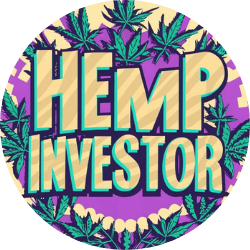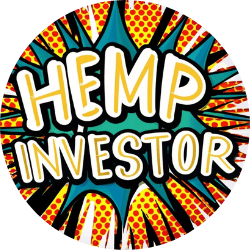Simultaneous cannabis and psychedelic use among festival and concert attendees in Colorado: characterizing enhancement and adverse reactions using mixed methods | Journal of Cannabis Research
Among participants who endorsed co-use of cannabis and psychedelics (N = 63), 50.8% reported using cannabis most recently with psilocybin, 41.3% reported using with LSD, 27% reported using with MDMA, 17.5% reported using with ketamine, 4.8% reported using with DMT, and 3.2% reported using with mescaline. When asked what forms of cannabis participants used during their most recent co-use experience, 79.4% of participants reported using flower cannabis, 50.8% reported using concentrates, and 22.2% of participants reported using edibles. Notably, 33.3% of participants endorsed using more than one psychedelic substance during their most recent co-use experience and 39.7% of participants reported using more than one form of cannabis. Further, most participants reporting on their most recent co-use experience endorsed daily (55.6%) or weekly (20.6%) cannabis use.
For flower products, the mean quantity used was 3.76 g (SD = 3.89), the mean within-session frequency of use (number of times used during the experience) was 6.02 (SD = 5.95), and the most commonly endorsed THC content was 20–24%. For dab products (e.g., shatter, wax), the mean number of dabs used per session was 4.06 (SD = 4.67), the mean within-session frequency of use was 3.67 (SD = 2.94), and the most commonly endorsed THC content was 70–79%. For concentrate cartridge products, the mean number of hits taken was 11.21 (SD = 7.90), the mean within-session frequency was 8.67 (SD = 6.89), and the most commonly endorsed THC content was 80–90%. Finally, for edible products, the mean within-session frequency was 1.73 (SD = 1.39) and the mean THC content was 70 mg (SD = 69.85). Descriptive statistics for the cannabis and psychedelic products that participants reported using is reported in Table 2. In the supplementary material (supplement 1–6), descriptive statistics for these variables are also provided across each individual theme and for participants reporting an adverse reaction. Across the 63 participants who reported on their most recent co-use experience, 54 provided a written response detailing the ways that cannabis enhanced their most recent psychedelic experience. Our final codebook included 13 codes, of which 5 themes were generated from the data (Table 3).
Theme 1: tension reduction and balancing of psychedelic drug effects
The most commonly endorsed theme was tension reduction and balancing of psychedelic drug effects (N = 27, 50%). Specifically, participants reported using cannabis to mitigate anxiety related to the psychedelic experience or to calm them down during a “bad trip”. Some participants also shared that using cannabis allowed them to “stay grounded” and others stated that cannabis served to balance psychedelic drug effects. Among participants endorsing theme 1, 24 participants (88.9%) reported using flower, 12 participants (44.4%) reported using concentrates, and 3 participants (11.1%) reported using edibles. Across psychedelic substances, 12 participants reported using LSD (44.4%), 13 reported using psilocybin (48.1%), 1 reported using DMT (3.7%), 9 reported using MDMA (33.3%), and 7 reported using ketamine (25.9%).
Theme 2: enhancement to psychological processes
Participants reported that using cannabis during the psychedelic experience enhanced psychological processes within three distinct domains (N = 11, 20.4%), which we have denoted as subthemes. Subthemes included cognitive enhancement (N = 5, 9.3%), increased positive affect (N = 6, 11.1%), and ambiguous enhancement to psychological processes (N = 2, 3.7%). Among participants endorsing theme 2, 10 participants (90.9%) reported using flower, 6 participants (54.5%) reported using concentrates, and 2 participants (18.2%) reported using edibles. Across psychedelic substances, 6 participants reported using LSD (54.5%), 6 reported using psilocybin (54.5%), 1 reported using DMT (9.1%), 3 reported using MDMA (27.3%), and 1 reported using ketamine (9.1%).
Subtheme 2.1: cognitive enhancement
Participants shared that cannabis enhanced cognitive experiences while using psychedelics by allowing for greater cognitive control and attenuation of intrusive thoughts. Additionally, some participants reported that using cannabis led to a “much more introspective state” and allowed them to “think more clearly and honestly” while using psychedelics.
Subtheme 2.2: increased positive affect
Participants reported increased feelings of joy and happiness while co-using cannabis with psychedelics and noted that using cannabis made the psychedelic experience more enjoyable.
Subtheme 2.3: ambiguous psychological enhancement
Responses were categorized as ambiguous psychological enhancement when participants reported psychological enhancement but did not specify in enough detail to be coded as cognitive or emotional enhancement (e.g., “weed makes everything better and more manageable”).
Theme 3: intensified psychedelic drug effects
Participants reported that using cannabis during their most recent psychedelic experience intensified psychedelic drug effects (N = 12, 22.2%), again encompassing three domains. Subthemes included enhanced visual effects (N = 7, 13%), enhanced body effects (N = 4, 7.4%), and ambiguous enhancement of drug effects (N = 3, 5.6%). Among participants endorsing theme 3, 11 participants (91.7%) reported using flower, 7 participants (58.3%) reported using concentrates, and 4 participants (33.3%) reported using edibles. Across psychedelic substances, 5 participants reported using LSD (41.7%), 7 reported using psilocybin (58.3%), 1 reported using mescaline (8.3%), 3 reported using MDMA (25%), and 3 reported using ketamine (25%).
Subtheme 3.1: enhanced visual effects
Participants reported that using cannabis made visual effects feel stronger. While most participants did not specify beyond increased intensity of visual effects, one participant noted enhancement of colors and lights.
Subtheme 3.2: enhanced body effects
Participants shared that cannabis “improved the bodily feeling” when using psychedelics, enhanced the “body high”, and brought them “more into their body”.
Subtheme 3.3: ambiguous enhancement of drug effects
Responses were categorized as ambiguous enhancement of drug effects when participants reported that their drug experience felt more intense but did not specify in what ways (e.g., “makes me trip harder”).
Theme 4: enhanced psychedelic “come-down” experience
Participants reported that using cannabis enhanced their psychedelic “come-down” (N = 8, 14.8%) through the following mechanisms: 1) extending the psychedelic experience or intensifying the come-down period (N = 7, 13%) and 2) aiding in recovery from psychedelic drug effects (N = 2, 3.7%). Among participants endorsing theme 4, 3 participants (37.5%) reported using flower, 4 participants (50%) reported using concentrates, and 2 participants (25%) reported using edibles. Across psychedelic substances, 3 participants reported using LSD (37.5%), 5 reported using psilocybin (62.5%), 1 reported using DMT (12.5%), 1 reported using mescaline (12.5%), and 1 reported using MDMA (12.5%).
Subtheme 4.1: extension of psychedelic drug effects or intensified come-down
Participants shared that using cannabis made their psychedelic experience last longer, “brought back the trip”, and made the latter hours of the trip feel more intense.
Subtheme 4.2: enhanced recovery from psychedelic drug effects
Several participants reported enhanced recovery from psychedelic drug effects such that using cannabis helped participants fall asleep after the psychedelic experience or “wind down”.
Theme 5: overall ambiguous enhancement
Finally, several participants (N = 7, 13%) reported that cannabis enhanced their psychedelic experience but did not specify the mechanism by which it was enhanced (e.g., “made everything better”). Among participants endorsing theme 5, 4 participants (57.1%) reported using flower, 6 participants (85.7%) reported using concentrates, and 2 participants (28.6%) reported using edibles. Across psychedelic substances, 4 participants reported using LSD (57.1%), 3 reported using psilocybin (42.9%), 1 reported using DMT (14.3%), 4 reported using MDMA (57.1%), and 1 reported using ketamine (14.3%).
Negative or adverse reactions
11.1% of participants (N = 7) responded to the question inquiring about negative or adverse reactions. Though not thematically analyzed due to low response rate, responses to this question included content around increased anxiety and intensity of the experience, decreased sociability, increased negative affect, sleepiness, disassociation, and confusion (these responses are listed in Table 4). Among participants reporting an adverse reaction, 5 participants (71.4%) reported using flower, 3 participants (42.9%) reported using concentrates, and 1 participant (14.3%) reported using edibles. Across psychedelic substances, 3 participants reported using LSD (42.9%), 3 reported using psilocybin (42.9%), 1 reported using DMT (14.3%), 2 reported using MDMA (28.6%), and 1 reported using ketamine (14.3%).



